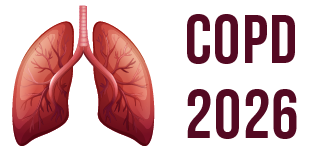3rd World Congress on
COPD and Pulmonary Diseases
September 09-10, 2026 | Barcelona, Spain

COPD 2026

iLab Research Institute, Canada
Abstract:
Idiopathic pulmonary fibrosis (IPF) is a progressive fibrotic lung disease associated with increased lymphatic vascular density, which correlates with disease severity. To explore the role of lymphatic endothelial cells (LECs) in IPF pathogenesis, we reanalyzed publicly available single-cell RNA sequencing data from 14 healthy donors and 5 IPF patients, comprising 54,121 cells. Using Seurat (v4.0.0), we performed data scaling, clustering, dimensionality reduction, and differential expression analysis. Trajectory analysis revealed that LECs in IPF lungs adopt activated phenotypes, diverging into two populations: tip/stalk-like LECs and immune-stimulating LECs (isLECs). Tip/stalk LECs showed elevated proinflammatory markers (e.g., CCL21, ICAM1), while isLECs expressed high levels of HLA class II molecules. Both populations demonstrated increased HIF-1α signaling, more pronounced in tip/stalk LECs. The abundance of isLECs correlated positively with disease severity. Receptor-ligand interaction analysis indicated LEC crosstalk with T cells, B cells, macrophages, fibroblasts, and smooth muscle cells. These interactions may promote fibrosis via enhanced fibroblast collagen production, tertiary lymphoid structure (TLS) formation, and local inflammation. Tip LECs also expressed high levels of TNF-α and PDGF, potentially contributing to smooth muscle recruitment and impaired lymphatic function. Together, our findings suggest that hypoxia-induced HIF-1α signaling drives maladaptive lymphangiogenesis and LEC activation, promoting chronic inflammation and fibrosis in IPF.
Biography:
Aiden Xia is a research intern at iLab Research Institute. He learned and applied the RNA sequencing data analysis tools in different datasets analysis including doing data analysis on idiopathic pulmonary fibrosis.
